TV broadcasting software has revolutionized the way television content is produced, managed, and distributed. In this era of technical advancements, where the demand for high-quality video content continues to soar, broadcasters and media professionals rely on powerful software solutions to streamline their operations and deliver engaging programming to audiences worldwide.
From scheduling and playout automation to graphics generation and multi-channel management, TV broadcasting software encompasses a wide range of tools and technologies designed to enhance efficiency, creativity, and audience reach.
A cloud-based TV broadcasting software can be used by movies, music, news, and sports channels to stream content online and insert ads in between them to earn revenue. Achieving broadcast quality through the traditional method has been a challenge to several broadcasters.
However, cloud broadcasting platforms can enable broadcasters to overcome this challenge and deliver quality content to the end-users. In short, cloud TV helps you produce, distribute and monetize your video content with the most comprehensive broadcast quality at a reasonable investment.
To give you a better insight, we will delve deeper into the overview of TV broadcasting software in this blog. So, let’s start!
Understanding TV Broadcasting Software
1. Content Management and Organization
Effective content management and organization are vital for broadcasters to efficiently handle their vast libraries of media assets. TV broadcasting software offers robust tools for metadata tagging, indexing, and search functionalities, allowing users to easily locate and access relevant content.
It enables efficient media asset management, ensuring smooth workflows and quick retrieval of assets for various production needs.
2. Ingest and Transcoding Capabilities
TV broadcasting software provides features for seamless ingestion and transcoding of media files into various formats and resolutions. This allows broadcasters to handle different source materials, such as live feeds, pre-recorded content, and external contributions, and ensure compatibility with different broadcast platforms and delivery channels.
Transcoding capabilities enable efficient file size management, ensuring optimal quality and reducing bandwidth requirements.
3. Real-time Editing and Post-Production Tools
TV broadcasting software includes powerful editing and post-production tools that enable broadcasters to enhance their content and create compelling stories. These tools provide a wide array of features such as timeline-based editing, multi-camera support, color grading, audio mixing, and visual effects.
Real-time editing capabilities allow broadcasters to make instant changes and adjustments, ensuring seamless and efficient workflows.
4. Playout Automation and Scheduling
Playout automation and scheduling are crucial components of TV broadcasting software, enabling broadcasters to automate the delivery of their content. This feature allows for the creation of playlists, scheduling of programs, commercials, and promotions, and the seamless transition between different content elements.
Playout automation eliminates the need for manual intervention, reducing the risk of errors and ensuring uninterrupted broadcast operations.
5. Graphics Generation and Virtual Sets
TV broadcasting software includes tools for graphics generation, enabling the creation of visually engaging elements such as lower-thirds, tickers, logos, and animations. These tools provide flexibility in designing and customizing on-screen graphics to match the broadcaster’s brand identity.
Virtual sets, enabled by chroma keying technology, allow for the integration of virtual environments, enhancing the visual appeal of broadcasts.
6. Integration of Advanced Technologies
TV broadcasting software integrates advanced technologies to enhance the viewer experience and streamline production processes. Augmented reality (AR) enables the overlay of virtual elements onto live or pre-recorded content, creating interactive and immersive experiences.
Artificial intelligence (AI) capabilities, such as automated closed captioning, facial recognition, and content analysis, contribute to efficient content creation, audience engagement, and data-driven insights.
7. Multi-channel Management and Distribution Options
TV broadcasting software supports multi-channel management and distribution, allowing broadcasters to reach diverse audiences across various platforms. It facilitates the distribution of content to traditional broadcast channels, cable networks, satellite providers, and online streaming platforms.
This multi-channel approach ensures maximum reach and enables broadcasters to adapt to changing viewer preferences and consumption habits.
8. Media Asset Archiving and Preservation
TV broadcasting software offers robust archiving capabilities to preserve media assets for future use. It enables the secure storage of content, including metadata, and provides efficient retrieval options for historical footage, archival programs, and other valuable media assets.
Media asset archiving ensures easy access, long-term preservation, and potential monetization opportunities for broadcasters.
What Does TV Broadcasting Software Do?
TV broadcasting software plays a crucial role in the production and transmission of television content. It’s like the behind-the-scenes wizard that makes everything come together on your screen. Here are some of its main functions:
Video Capture and Editing
TV broadcasting software allows producers to capture and edit video content. This includes recording live events, editing pre-recorded footage, and adding special effects or graphics.
Live Streaming
It enables the live broadcast of events as they happen. Whether it’s a news program, sports event, or live entertainment, the software facilitates the real-time transmission of content to viewers.
Graphics and Text Overlays:
The software lets broadcasters add graphics, logos, text, and other visual elements to the broadcast. This helps in conveying additional information, branding, and enhancing the overall viewing experience.
Switching Between Sources:
In live broadcasting, there are often multiple sources of content—different cameras, pre-recorded segments, external feeds, etc. The software allows seamless switching between these sources during a live broadcast.
Audio Management:
It handles the audio components of the broadcast, ensuring that sound levels are balanced, and any necessary audio effects or enhancements are applied.
Encoding and Compression:
Before a broadcast can be transmitted, the content needs to be encoded and compressed. The software manages this process, optimizing the content for efficient transmission over the airwaves or through digital platforms.
Transmission Control:
TV broadcasting software oversees the actual transmission of the content. This involves coordinating with broadcasting equipment to ensure that the signal reaches the intended audience.
Monitoring and Quality Control:
The software often includes tools for monitoring the quality of the broadcast in real-time. This helps broadcasters identify and address issues promptly.
Pros of TV Broadcasting software
- Professionalism: It helps you achieve a polished and professional look for your broadcasts, enhancing the overall viewer experience.
- Customization: Many broadcasting software options offer a range of customizable features, allowing you to tailor your broadcasts to suit your brand or personal style
- Multimedia Integration: You can seamlessly integrate various multimedia elements like graphics, videos, and animations, making your broadcasts more engaging and dynamic.
- Live Interaction: Some software enables live interaction with your audience through features like chat and social media integration, fostering a sense of community.
- Multi-platform Streaming: You can broadcast to multiple platforms simultaneously, reaching a broader audience and maximizing your impact.
- Quality Control: TV broadcasting software often provides tools for monitoring and adjusting the quality of your broadcast, ensuring a smooth and clear presentation.
- Analytics: Many platforms offer analytics tools that help you track viewer metrics, allowing you to understand your audience better and refine your content accordingly.
- Easy Editing: Editing capabilities within the software make it convenient to refine your content on the fly, ensuring a more polished and professional end product.
Cons of TV Broadcasting software
- Complexity: The software used in TV broadcasting can be complex, requiring a learning curve for operators. This complexity may lead to errors or difficulties in managing the system efficiently.
- Bandwidth Requirements: High-quality video streaming demands substantial bandwidth. This can be a limitation for users with slower internet connections or in regions with limited internet infrastructure.
- Maintenance Challenges: Broadcast equipment requires regular maintenance and updates to ensure optimal performance. This can be time-consuming and may require technical expertise, adding to the overall cost of running a broadcasting system.
- Licensing and Legal Issues: Broadcasting often involves dealing with licensing agreements for content. Violating these agreements can lead to legal issues and financial penalties. Navigating the complex landscape of content rights can be a challenge.
Benefits of TV Broadcasting Software
1. Increased Operational Efficiency and Productivity
TV broadcasting software streamlines workflows, automates processes, and eliminates manual tasks, resulting in increased operational efficiency and productivity. With features like content management, playout automation, and scheduling, broadcasters can manage their content libraries, create playlists, and schedule programs with ease.
Automated processes reduce the risk of errors, ensure consistent output, and free up time for broadcasters to focus on content creation and audience engagement.
2. Improved Content Quality and Production Value
TV broadcasting software offers a suite of powerful tools for real-time editing, post-production, and graphics generation, enabling broadcasters to enhance content quality and production value.
With intuitive editing interfaces, color grading capabilities, visual effects, and virtual sets, broadcasters can create visually appealing and engaging programs. These tools allow for professional-level editing, resulting in polished and compelling content that captivates the audience.
3. Expanded Distribution Options and Audience Reach
TV broadcasting software opens up a world of distribution options beyond traditional broadcast channels. With the ability to distribute content across cable networks, satellite providers, and online streaming platforms, broadcasters can reach wider audiences.
This expanded distribution reach allows for increased visibility and the opportunity to attract new viewers from different geographical locations and demographics.
4. Enhanced Audience Engagement and Interactivity
TV broadcasting software incorporates features that foster audience engagement and interactivity, leading to a more immersive viewing experience. Augmented reality (AR) elements, interactive graphics, and social media integration enable broadcasters to create interactive elements that captivate viewers.
Features like live chats, real-time polls, and audience participation options encourage viewer involvement, creating a sense of community and connection.
5. Cost Savings and Resource Optimization
TV broadcasting software offers cost savings and resource optimization benefits for broadcasters. By automating processes, reducing manual intervention, and streamlining workflows, broadcasters can save time and reduce labor costs.
Additionally, software-driven playout automation eliminates the need for dedicated hardware, reducing capital expenditure. Furthermore, centralized content management and asset archiving minimize duplication, optimize storage, and ensure efficient resource utilization.

Elements of TV broadcasting
Content Creation and Acquisition:
- Cameras and Microphones: High-quality audio and video capture devices are essential for creating content.
- Editing Software: To refine and edit the raw footage before broadcasting.
Encoding:
Codec: The content needs to be encoded into a suitable format for streaming. Common codecs include H.264 and H.265.
Cloud Storage:
Media Storage: Use cloud storage solutions to store and manage your media files securely.
Content Delivery Network (CDN):
CDN Services: Utilize a CDN to distribute content to various servers globally, reducing latency and improving streaming quality.
Live Streaming Platform:
Cloud-Based Broadcasting Software: Platforms like OBS Studio or Streamlabs OBS enable you to broadcast live content to your audience.
Internet Connection:
High-Speed Internet: A reliable and fast internet connection is crucial for uploading your content to the cloud and ensuring smooth streaming.
Security Measures:
Encryption: Implement encryption protocols (SSL/TLS) to secure the content during transmission.
Playback Devices:
Compatibility: Ensure that your content can be played on a variety of devices, such as computers, smartphones, and smart TVs.
Analytics and Monitoring:
Tracking Tools: Use analytics tools to monitor viewer engagement, track performance, and gather insights for improvements.
Monetization Options:
Payment Gateways: If applicable, integrate payment gateways for pay-per-view or subscription-based models.
Social Media Integration:
Sharing Features: Integrate social media sharing options to expand your reach and engage with a broader audience.
Key Considerations when Selecting TV Broadcasting Software
1. Budget and Cost Implications

Budget is a significant consideration when choosing TV broadcasting software. It is important to assess the overall cost of the software, including licensing fees, maintenance charges, and any additional hardware or equipment requirements.
Consider the long-term return on investment (ROI) and evaluate whether the features and capabilities of the software align with the allocated budget.
2. Scalability and Compatibility with Existing Infrastructure
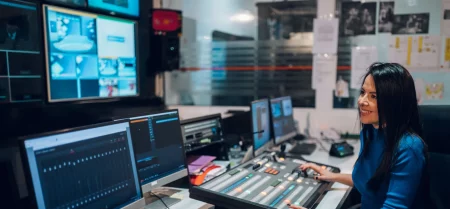
Scalability refers to the ability of a TV broadcasting software to handle increased workloads, additional channels, and expanding content libraries as the broadcaster’s needs grow over time. It is crucial to choose a software solution that can accommodate the growing demands of the broadcasting operations without compromising performance or stability.
When assessing scalability, it is important to consider factors such as the software’s capacity to handle higher data volumes, support for concurrent users, and the ability to scale resources such as processing power and storage capacity. The software should be capable of efficiently managing and processing large amounts of data, such as high-definition video streams, without experiencing significant performance degradation.
Furthermore, as the broadcaster expands its channel offerings or adds new content libraries, the software should be able to seamlessly integrate these additions. This includes features like easily configurable channel lineup management, support for multiple broadcast formats and standards, and the ability to handle different content types (e.g., live streams, pre-recorded videos, on-demand content).
Compatibility, on the other hand, refers to the ability of the TV broadcasting software to work effectively with the existing infrastructure of the broadcaster. This includes hardware components like servers, encoders, and storage systems, as well as any third-party integrations or software solutions that the broadcaster relies on.
To ensure seamless integration and minimize disruptions, it is essential to assess the compatibility of the software with the broadcaster’s infrastructure. The software should be able to interface with existing hardware and storage systems, utilizing them efficiently and effectively. This includes compatibility with different video encoding formats, protocols, and network configurations.
Moreover, the software should have the capability to integrate with third-party systems or services that are crucial to the broadcaster’s operations. This could include content management systems, ad insertion platforms, analytics tools, or any other software that is used for specific functionalities. Compatibility with these external systems ensures smooth data exchange and workflow automation.
3. Ease of Use and User Interface

The ease of use and user interface of TV broadcasting software greatly impact the efficiency and productivity of broadcasters. A user-friendly interface and intuitive workflows reduce the learning curve and enable broadcasters to quickly navigate the software and perform tasks efficiently.
Consider software demos and user reviews to assess the ease of use and ensure that it aligns with the skill level and requirements of the broadcasting team.
4. Technical Support and Updates

Reliable technical support and regular software updates are essential for smooth operations and troubleshooting. Evaluate the level of technical support provided by the software vendor, including response times, availability, and expertise.
Additionally, assess the frequency and quality of software updates, as these ensure bug fixes, security patches, and access to new features and functionalities that enhance the software’s performance and keep it up to date with industry standards.
5. Encoding and Transcoding
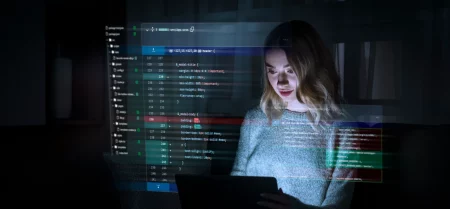
Encoding and transcoding capabilities are essential features to consider when selecting TV broadcasting software. Encoding involves converting video and audio content into digital formats suitable for transmission and storage.
Transcoding, on the other hand, involves converting media files from one format to another to ensure compatibility across different devices and platforms. It is crucial to choose software that supports a wide range of encoding and transcoding formats, allowing broadcasters to deliver content seamlessly to various distribution channels, including traditional broadcast, streaming services, and online platforms.
6. Dynamic Graphic Support

Dynamic graphic support is vital for creating engaging and visually appealing content. The software should provide robust tools for creating and manipulating graphics, such as lower thirds, overlays, and animations.
Advanced features like real-time graphics rendering and integration with external graphic systems can elevate the visual quality and branding of a broadcast. The ability to update graphics on the fly during live broadcasts or quickly modify templates for pre-recorded shows enhances the flexibility and efficiency of content production.
7. Captioning and Subtitle Support

Accessibility is a key consideration for broadcasters, and incorporating captioning and subtitle support in TV broadcasting software is essential. Captioning ensures that viewers with hearing impairments can follow the dialogue and understand the content.
Subtitles provide translations or transcriptions of dialogue for viewers who are not fluent in the broadcasted language. The software should offer intuitive tools for creating, editing, and synchronizing captions and subtitles accurately.
It is also important to consider the compatibility of the software with industry-standard captioning formats to ensure compliance with accessibility regulations.
8. Delivery of High-Quality (4K) Video

As technology advances, the demand for high-quality video content, including 4K resolution, continues to rise. When selecting TV broadcasting software, it is crucial to ensure that it supports the delivery of high-quality video, including the ability to capture, edit, store, and transmit 4K content.
The software should provide robust video processing capabilities, efficient compression algorithms, and seamless integration with high-resolution cameras and storage systems.
Additionally, it should support the efficient distribution of large 4K files to various platforms, considering the bandwidth requirements and network infrastructure.
9. Live Programming

Live programming is a cornerstone of television broadcasting, and the software chosen should provide robust tools for managing and broadcasting live content. Features such as multi-camera support, live switching, instant replay, and real-time monitoring are essential for seamless live productions.
The software should also offer reliable streaming capabilities to deliver live broadcasts to online platforms or dedicated streaming services. Integration with external devices, such as audio mixers and production switchers, enhances the flexibility and efficiency of live productions.
10. Reliability and Stability

Reliability and stability are paramount when it comes to TV broadcasting software. Broadcasters need software that can handle the demanding nature of 24/7 operations without frequent crashes or system failures.
Robust software that minimizes downtime and ensures smooth operation is essential for maintaining viewer satisfaction and meeting broadcasting deadlines. It is advisable to choose software from reputable vendors with a proven track record in the broadcasting industry and a history of providing reliable and stable solutions.
11. Security and Content Protection

As broadcasting involves handling valuable and copyrighted content, security and content protection are crucial considerations. The selected software should incorporate robust security measures to safeguard against unauthorized access, piracy, and content leakage.
Features such as encryption, secure authentication, and digital rights management (DRM) ensure the integrity and protection of broadcasted content. Compliance with industry standards and regulations, such as watermarking for content identification, enhances content protection and prevents unauthorized redistribution.
12. Cost and Return on Investment

Cost is a significant factor in the selection process, and broadcasters need to consider the upfront investment, licensing fees, ongoing maintenance costs, and potential scalability expenses.
It is essential to evaluate the overall return on investment (ROI) that the software can provide in terms of increased efficiency, improved workflows, enhanced production quality, and the ability to reach broader audiences.
Conducting a cost-benefit analysis and considering the long-term value and potential growth opportunities the software offers will help broadcasters make the right financial decisions.
The Bottom Line
Undoubtedly, TV broadcasting software plays a crucial role in the modern media landscape, empowering broadcasters to produce, manage, and distribute high-quality television content.
From content management and organization to real-time editing, playout automation, and integration of advanced technologies, the functionalities and features offered by TV broadcasting software enhance operational efficiency and elevate content quality.
One such solution that aligns with the discussed considerations is Muvi Playout, a cloud-based broadcast playout software designed for linear TV channels. With Muvi Playout, broadcasters can schedule, launch, and manage their online TV channels seamlessly.
The software offers customizable options, allowing broadcasters to create a unique and branded channel that resonates with their target audience. By harnessing the power of Muvi Playout, broadcasters can gain global exposure, expand revenue streams, and build a loyal audience.
How To Broadcast Video using Muvi’s TV Broadcaster Software
Muvi Playout is a Cloud Playout Software for scheduling, launching, and managing your cloud based linear TV channel. It helps you gain global exposure, expand revenue streams, and build a loyal audience.
Sign up with Muvi Playout:
- Go to the Muvi website and locate the sign-up page.
- Provide the necessary information to create an account. This typically includes your email address, a password, and any other required details.
Purchase Subscription:
- Once you’ve created your account, log in to the Muvi platform.
- Navigate to the subscription or billing section to choose a subscription plan that suits your broadcasting needs.
- Complete the payment process to activate your subscription.
Add a Channel:
- After subscribing, log in to your Muvi account.
- Look for an option like “Add Channel” or “Create Channel” in the dashboard.
- Fill in the details for your channel, including the name, description, and any other relevant information.
- You might also need to upload your channel logo and set up any branding elements.
Schedule Content using Drag-and-Drop Scheduler:
- Once your channel is set up, navigate to the scheduling section or dashboard.
- Muvi’s TV Broadcaster Software likely has a drag-and-drop scheduler interface.
- Locate the schedule for the desired channel and select the time slots you want to fill with content.
- Drag your video files or content assets into the designated time slots to schedule them for broadcast.
- You may have options to schedule content for specific dates and times, and you can create playlists for a seamless broadcast experience.
Broadcast Your Content:
- With the content scheduled, you’re ready to start the broadcast.
- Muvi’s software should have a “Go Live” or “Start Broadcast” option. Look for it in the broadcasting or streaming section.
- Confirm your settings and initiate the broadcast.
Intrigued to try it out? Take a 14-day free trial today (no credit card needed)!

FAQs
TV broadcasting software is a specialized application used in the television industry to manage, schedule, and transmit content. It aids in the production, delivery, and monitoring of television programs and channels.
Benefits of using TV broadcasting software include streamlined content management, scheduling automation, improved broadcast quality, real-time monitoring, audience analytics, and enhanced viewer engagement through interactive features.
TV broadcasting software enhances efficiency by automating tasks like content scheduling, reducing manual errors, providing real-time insights for better decision-making, facilitating remote operations, and integrating with other systems for seamless workflows, ultimately leading to a more effective and organized broadcasting process.
Yes, Muvi Playout’s TV broadcasting software is compatible with various platforms and devices. It is designed to work seamlessly across multiple platforms, including web browsers, mobile devices, smart TVs, and streaming devices, ensuring a wide reach and accessibility for viewers on different screens.
The two main types of TV broadcast are analog and digital broadcasting.
Analog Broadcasting – Analog broadcasting is the traditional method of transmitting television signals. It uses analog signals to carry audio and video information. The quality of the signal can degrade over distance, resulting in issues like ghosting, snow, and interference.
Digital Broadcasting – Digital broadcasting involves the transmission of television signals in a digital format. This method offers better signal quality and allows for additional features such as high-definition (HD) television, electronic program guides, and interactive content.


















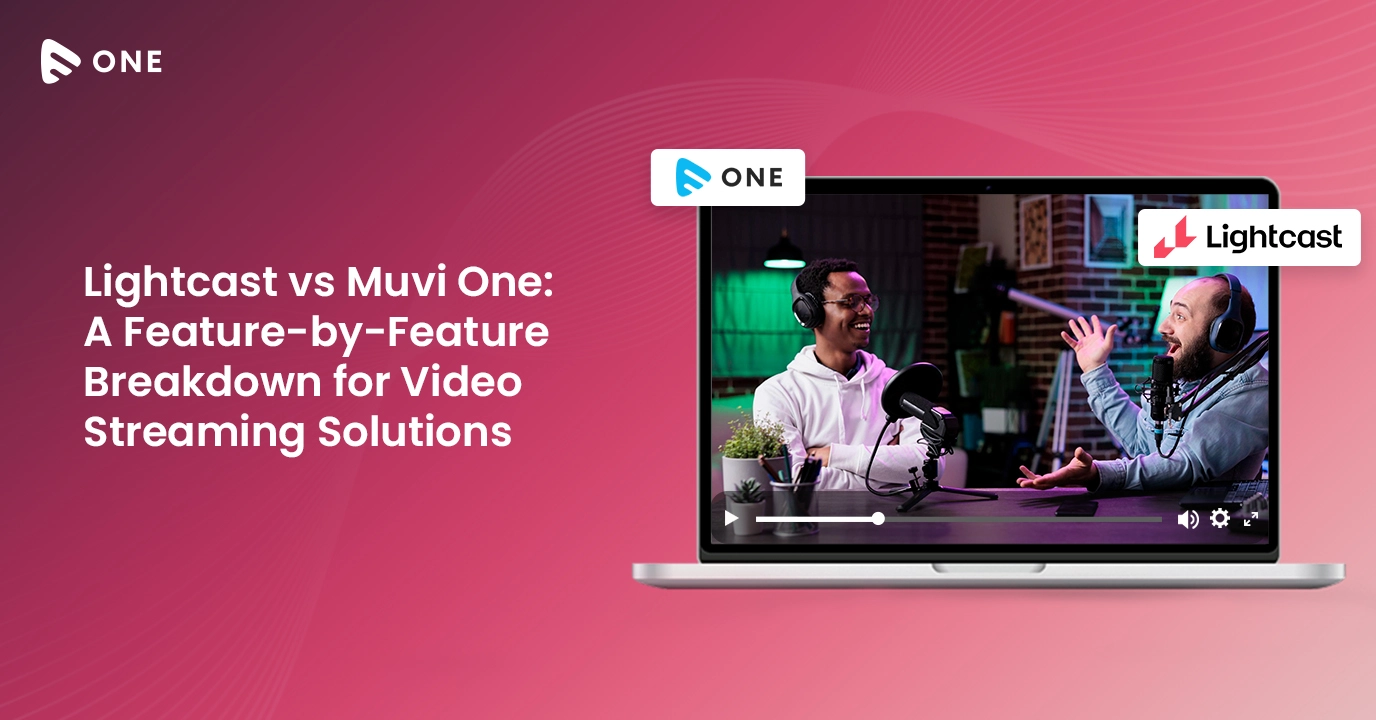
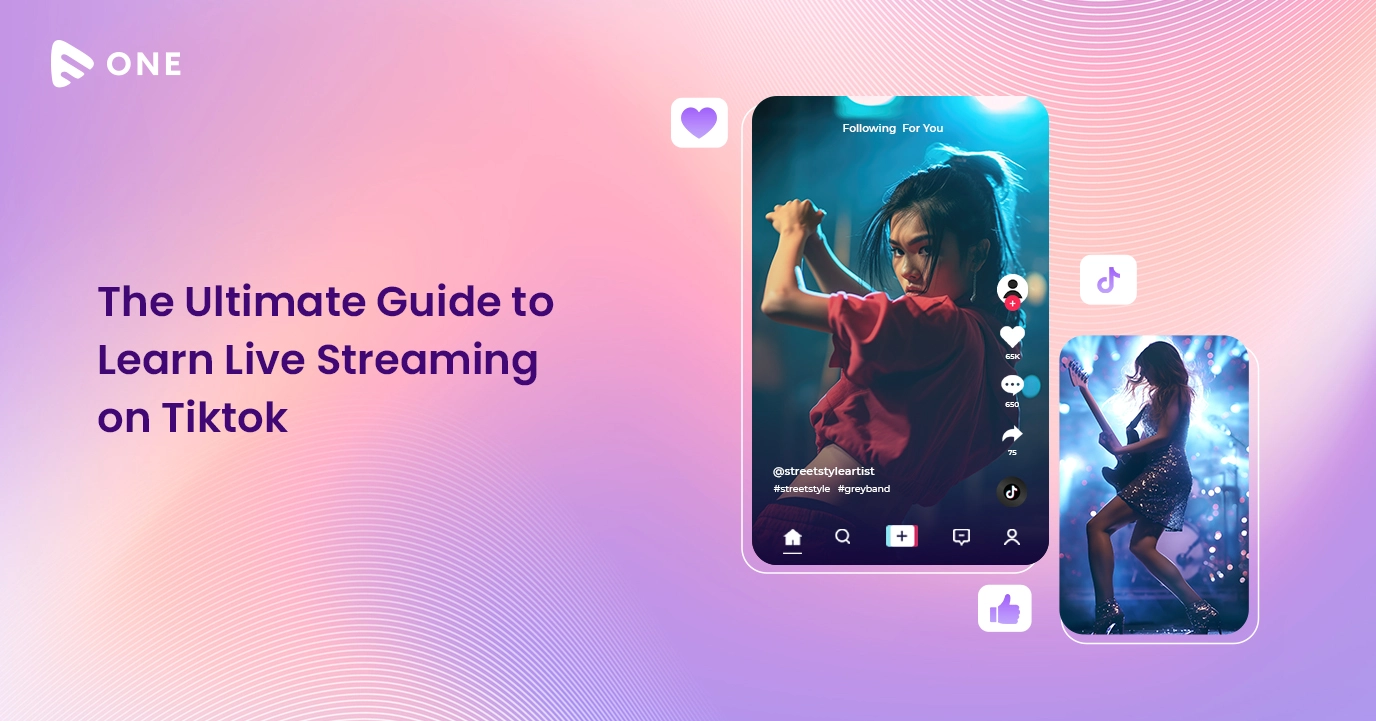

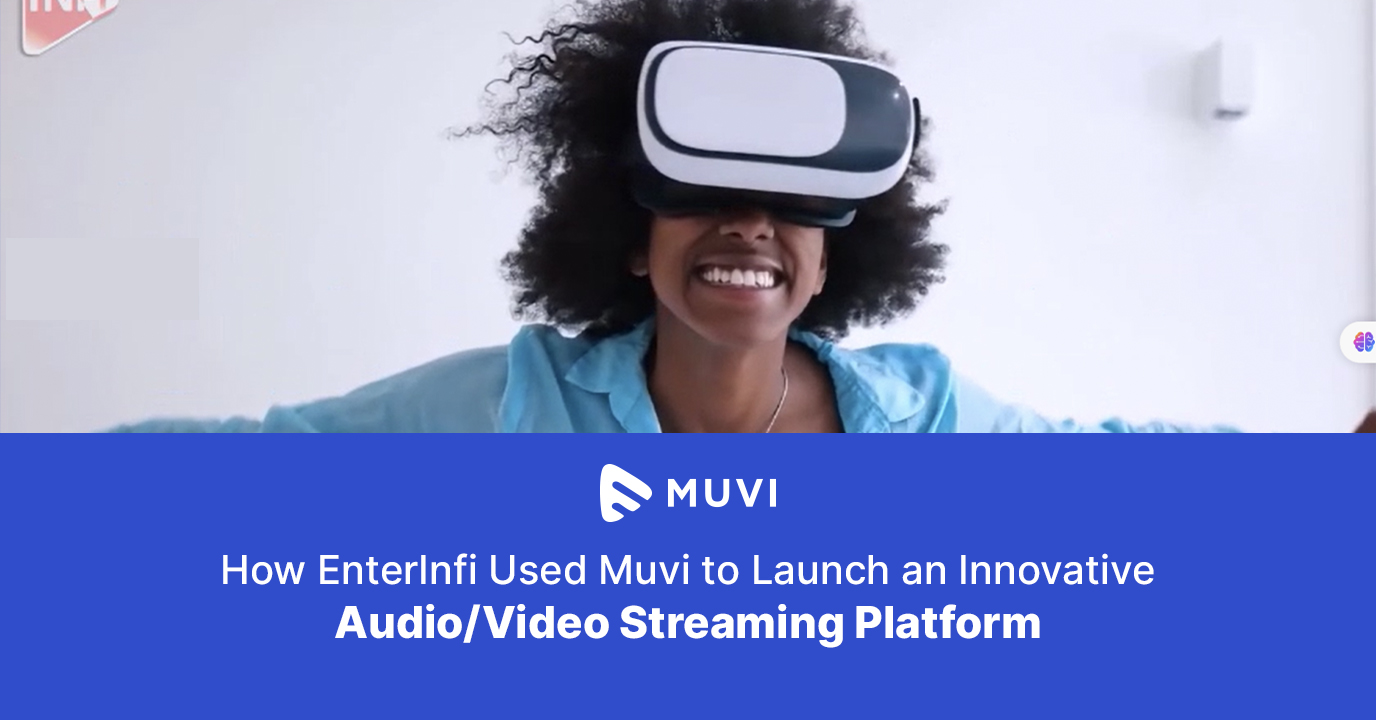
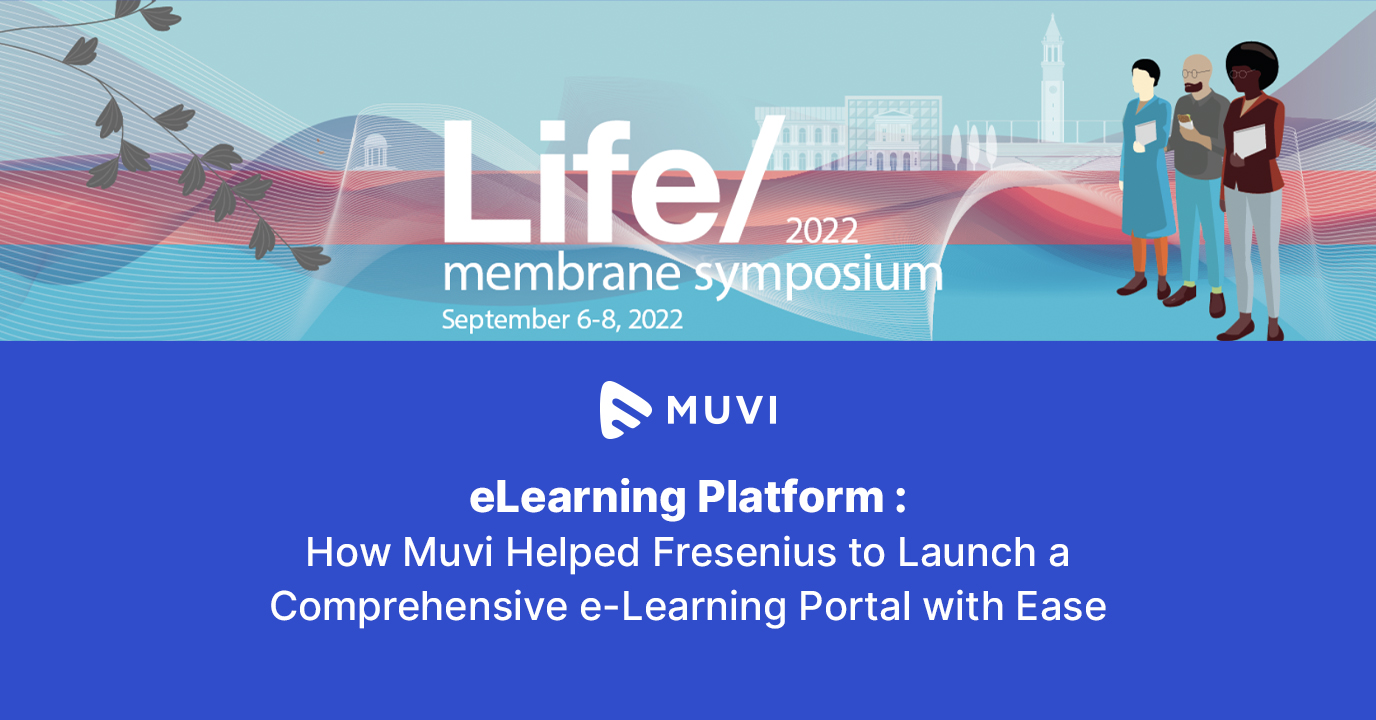







Add your comment